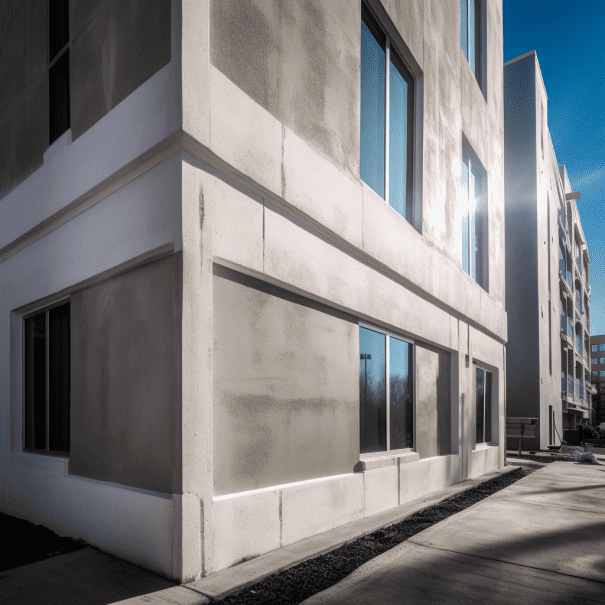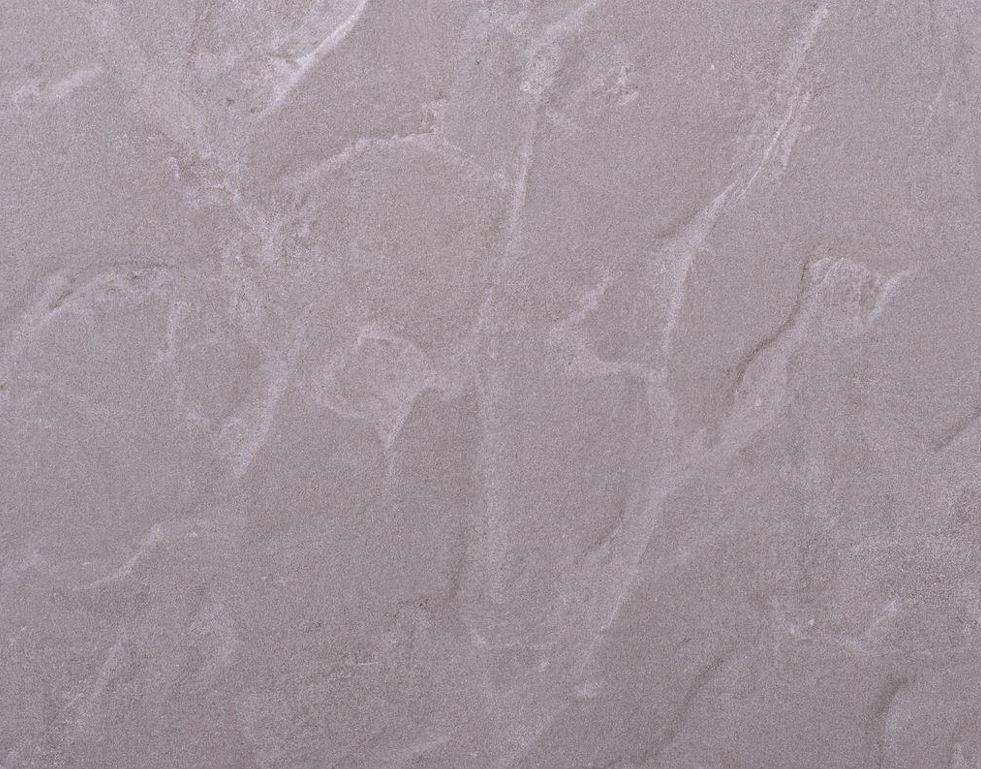Craftsmanship Meets Innovation: A Comprehensive Guide to Traditional and Modern Wall Finishes
Stucco and EIFS (exterior insulation and finish systems) are two popular exterior finishes for homes and buildings. But what exactly are the differences between traditional stucco plastering and EIFS? This comprehensive guide examines the materials, installation methods, costs, and performance factors of each system to help you determine which is the better option for your exterior walls.
A Quick Overview of Stucco and EIFS
Traditional stucco refers to a portland cement plaster coating applied over a wire lath or masonry substrate. It provides a decorative, solid, weather-resistant finish for exterior walls. Stucco can be applied directly to masonry like concrete, brick, and stone. When applied over framed walls, it requires a base layer like building paper or house wrap covered with wire lath.
EIFS is an exterior cladding system comprised of foam insulation boards glued or mechanically fastened to the substrate, a reinforced base coat, and a textured acrylic finish coat. Also known as synthetic stucco, EIFS creates a continuous layer of insulation and weatherproofing over the entire wall. It’s a lighter-weight alternative to traditional stucco.
While both serve to protect building exteriors, stucco, and EIFS have some notable differences in their materials, installation method, performance, and cost. Read on as we explore these key factors in detail.
What Materials Make Up Traditional Stucco and EIFS?
The primary material in traditional stucco is portland cement. Portland cement is mixed with sand and lime to create a plaster that hardens when cured. Here are the basic components of a stucco system:
- Portland cement – a binding agent that hardens and strengthens the plaster
- Sand – aggregate that provides bulk and texture
- Lime – improves workability and water resistance
- Water – activates curing and hardening
- Wire lath or masonry substrate – base layer that plaster adheres to
- Metal trim and accessories – for corners, expansion joints, windows
With EIFS, the main components are:
- Insulation boards – typically expanded polystyrene foam
- Base coat – reinforced layer over insulation boards
- Finish coat – acrylic or polymer-based coating for texture and color
- Adhesives and mechanical fasteners – attach the system to the substrate
- Mesh – provides strength and impact resistance
So the key difference is that traditional stucco relies on a cement-based plaster while EIFS uses synthetic insulating materials and acrylic finishes. Stucco depends on the substrate strength while EIFS provides its own base with the foam boards.
How is Traditional Stucco Installed vs. EIFS?
Installing traditional stucco is a multi-step process requiring specialized skills:
- Prep substrate – Install weather barrier over framed walls or apply a bonding agent to masonry.
- Attach metal lath – Nail galvanized wire lath over building paper or wrap.
- Mix stucco – Blend portland cement, sand, lime, and water to proper ratio.
- Apply scratch coat – Trowel on the first tight layer to embed lath.
- Apply brown coat – Add a second thicker layer to level the surface.
- Apply finish coat – Finish with a thin, smooth final layer.
- Curing – Mist water to cure stucco for several days.
EIFS relies more on adhesive and mechanical fastening methods:
- Prep substrate – Clean and apply adhesive to the surface.
- Attach insulation – Secure foam boards using adhesive and/or screws/washers.
- Apply base coat – Cover foam with a fiberglass-reinforced base coat.
- Embed mesh – Press mesh into the wet base coat.
- Apply finish coat – Roll or spray on colored, textured acrylic finish.
- Curing – Allow the finish coat to fully dry.
EIFS is adhered both mechanically and with adhesive, while stucco relies solely on the substrate and skills of the plasterer. EIFS also does not require multi-step plastering work. The main steps are securing the insulation and applying the reinforced coats.
How Do the Costs Compare?
On average, stucco costs $6-9 per square foot for materials and labor. Because it requires specialized labor and multiple layers, it is one of the more expensive exterior claddings.
EIFS typically ranges from $5-11 per square foot installed. The main cost factors are the extent of prep work needed, the type of insulation used, the number of stories, and the complexity of the project.
While material prices are broadly similar, EIFS can have a cost advantage due to faster installation requiring less labor. The foam insulation it includes also provides added energy efficiency benefits that can translate into long-term savings on utility bills.
When weighing up the costs, be sure to get an itemized quote accounting for all aspects of the project including prep, necessary repairs, accessories, and finish options. The contractor’s experience level also factors into pricing.
How Does the Durability Compare?
When properly installed, traditional stucco lasts for decades and provides excellent protection for the building structure underneath. It’s very impact-resistant and its cement-based composition stands up well to weathering. Minor hairline cracks may develop over time but do not affect the integrity or longevity of the stucco. Repairs can be made by patching and recoating affected areas.
EIFS is also durable but some formulations are more vulnerable to impact damage, moisture intrusion, and cracks. Poor initial installation can shorten its lifespan as well. Thermal expansion differences between the insulation and the finish coat can stress the system over time. Proper detailing and maintenance are needed to ensure lasting performance.
Stucco’s strength relies on its thick plaster composition while EIFS depends more on the acrylic finish integrity. Both require experienced contractors to ensure a long-lasting exterior. Stucco may have a slight edge for durability but EIFS can also deliver many years of useful life.
How Do the Wall Systems Handle Moisture?
Managing moisture is crucial for any exterior wall system. Traditional stucco inherently provides good water resistance thanks to its cement-based plaster composition. The multiple coats and thickness of stucco act as protection against bulk water penetration. At the same time, the wall can still breathe to allow interior moisture vapor to escape.
EIFS is designed to be a water-shedding barrier. The foam insulation layer is vulnerable to moisture damage so the reinforced base coat and finish coat provide a water-tight seal. But this also means moisture vapors from the interior can become trapped within the wall. EIFS requires careful detailing at openings and joints to allow for drainage and diffusion.
Stucco’s vapor permeable qualities give it an advantage for moisture management. EIFS relies more on meticulous craftsmanship and proper maintenance of sealants and flashings to prevent water intrusion issues.
Which Finish Offers Better Curb Appeal?
When it comes to aesthetics, stucco, and EIFS provide extensive design flexibility. Stucco’s natural plaster appearance can range from a sandy rough finish to a super smooth surface. Base coat color, finish coat textures, and paint or stain applications allow for unlimited color options. Decorative quoins, cornices, and rustication can enhance architectural styles.
EIFS acrylic finishes also offer diverse coloring and textures mimicking traditional stucco. The insulation layer minimizes uneven substrates for a flatter, more uniform finish. Specialty shapes and detailing are easily created. The synthetic composition ensures consistent performance and appearance.
Both finishes can match any style and budget. Stucco provides an authentic old-world look owing to its traditional plastering roots. But EIFS offers more precision and control with modern acrylic coatings. The choice comes down to the desired aesthetic quality and architectural style.
Which Provides Better Insulation Value?
When it comes to thermal performance, EIFS is the clear winner. The insulation component of EIFS creates a continuous blanket ranging from R-4 to R-12 depending on foam thickness. This exceeds the minimal R-value provided by a typical 7/8″ stucco application. EIFS eliminates thermal bridges across the wall surface.
Increasing stucco thickness can improve its insulation value but not to the extent of multi-inch foam sheathing. Furthermore, the solid mass of stucco can actually allow temperature transfer across the wall. EIFS is purpose-built with insulation as a key element of its assembly.
When is Stucco a Good Fit?
Stucco remains a popular choice for many construction and remodeling projects. Here are some of the best applications for traditional stucco:
- Matching existing stucco siding for repairs or additions
- Historic restoration projects requiring traditional materials and appearance
- Concrete, masonry, and solid wall substrates where adhesive attachment is difficult
- Noise reduction is a key requirement (stucco dampens sound)
- Budget is a primary concern and specialized EIFS labor is unavailable
- A natural plaster finish and rough stucco textures are desired for traditional or rustic styles
- Fire resistance and impact protection are important
When Does EIFS Offer Advantages?
While stucco has its benefits, EIFS will be the better option in these situations:
- Insulation value is critical for improving energy efficiency
- Lightweight cladding is needed for wood frame, modular, or offsite construction
- Fast installation with minimal disruption to occupants is required
- Special shapes, curves, and architectural details are part of the project
- Consistent, uniform wall surfaces and finishes are important
- Multi-story buildings where stucco weight could be an issue
- Decorative banding or accents using different colors and textures are desired
- Lower cost is a factor and skilled stucco plasterers are unavailable
By factoring in the specialized needs and conditions of your project, you can determine which system is the right fit. An experienced design professional can also help weigh the best options.
Key Takeaways on Stucco vs. EIFS
When comparing traditional stucco and EIFS synthetic stucco systems, keep these key differences in mind:
- Stucco uses cement-based plaster while EIFS has foam insulation and acrylic finishes
- EIFS adheres as a single-layer system vs. stucco’s multi-step plastering
- Stucco relies on substrate strength while EIFS provides its own backing
- Stucco generally costs more due to extensive labor and multiple coats
- EIFS offers faster installation but needs properly sealed details
- Stucco is thicker and highly impact-resistant; EIFS is more vulnerable to damage
- Stucco allows walls to breathe; EIFS requires air barriers and careful detailing
- EIFS provides vastly increased insulation; stucco has minimal R-value
- Stucco excels on masonry substrates and for fire resistance and sound-dampening
- EIFS suits lightweight construction and architectural shapes and textures
Consulting the right professionals and evaluating all aspects of your project will lead you to the best overall exterior wall solution. While stucco and EIFS take differing approaches, both can provide attractive, resilient finishes when skillfully installed. Paying attention to details like proper moisture management will ensure whichever system you choose performs as expected.
If you found this overview helpful and are interested in stucco or EIFS siding, contact our company today to request a quote for your upcoming project. Our team brings decades of experience installing beautiful, durable exterior finishes tailored to your unique needs.


